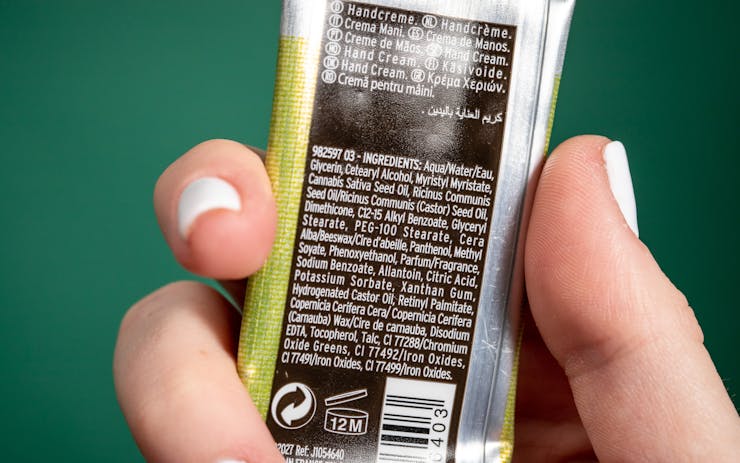Now that cannabis-infused topicals are legal, it’s time to do some real digging. While not all cannabis ingredients are created equal, neither are all the ingredients that are being paired with those plant-based compounds.
But first, let’s look at just the basics, please. Beauty brands have been using cannabis sativa seed oil, aka hemp seed oil, legally in products for a while now, but this ingredient does not contain CBD or THC, the two most prominent cannabis compounds. CBD- and THC-infused topicals became legal in Canada in October 2019, and will be available at licensed retailers in December 2019.
We spoke with a few experts on what to look for and what to avoid when purchasing cannabis-infused skin products.
What to look for
Off the bat, Anita Matte from Power Plant Apothecary suggests looking for full-spectrum CBD when laying down that credit card.
“A lot of people are forgetting that CBD is just one compound that the plant has to offer,” says Matte. She’s referring to what has been dubbed the entourage effect, the idea that whole plant medicine is best, because the over 100 cannabinoids and multitudes of terpenes in the cannabis plant share a symbiotic therapeutic relationship.
Aside from the cannabis compounds itself, what ingredients actually complement the plant when concocting formulations? Well, quite a few actually.
If inflammation is the reason you’re reaching for a topical, check the ingredient list for things like aloe vera and chamomile. Ginger, turmeric, and cayenne pepper will also blend well with cannabis ingredients, suggests Ashley Short, a holistic nutritionist and clinical herbalist, and co-founder of Earth Kisses Sky, a line of natural beauty and healing products.
Short relies on these ingredients because they will benefit the reason she is creating the product to begin with—which in this case includes anti-inflammatory, analgesic, and antiseptic properties.
“There are [a few] carrier oils that have been shown to empower deeper absorption of CBD,” says Casey Georgeson, founder of Saint Jane, a cannabis-infused skincare line based out of California. Those oils include MCT oil, grapeseed oil, hemp seed oil, and more.
What to avoid
Georgeson and Matte both agree to be wary of cannabis products containing parabens, phthalates, polyethylene glycol, and other synthetic ingredients. Their reasoning? “That’s really counter to what CBD offers in terms of natural holistic wellness benefit,” states Georgeson.
One last thing: Matte cautions the use of formulas with coconut oil—not because of any adverse interactions with cannabis compounds, but because not everyone tolerates it. It can cause reactions and clogged pores in some skin types.





